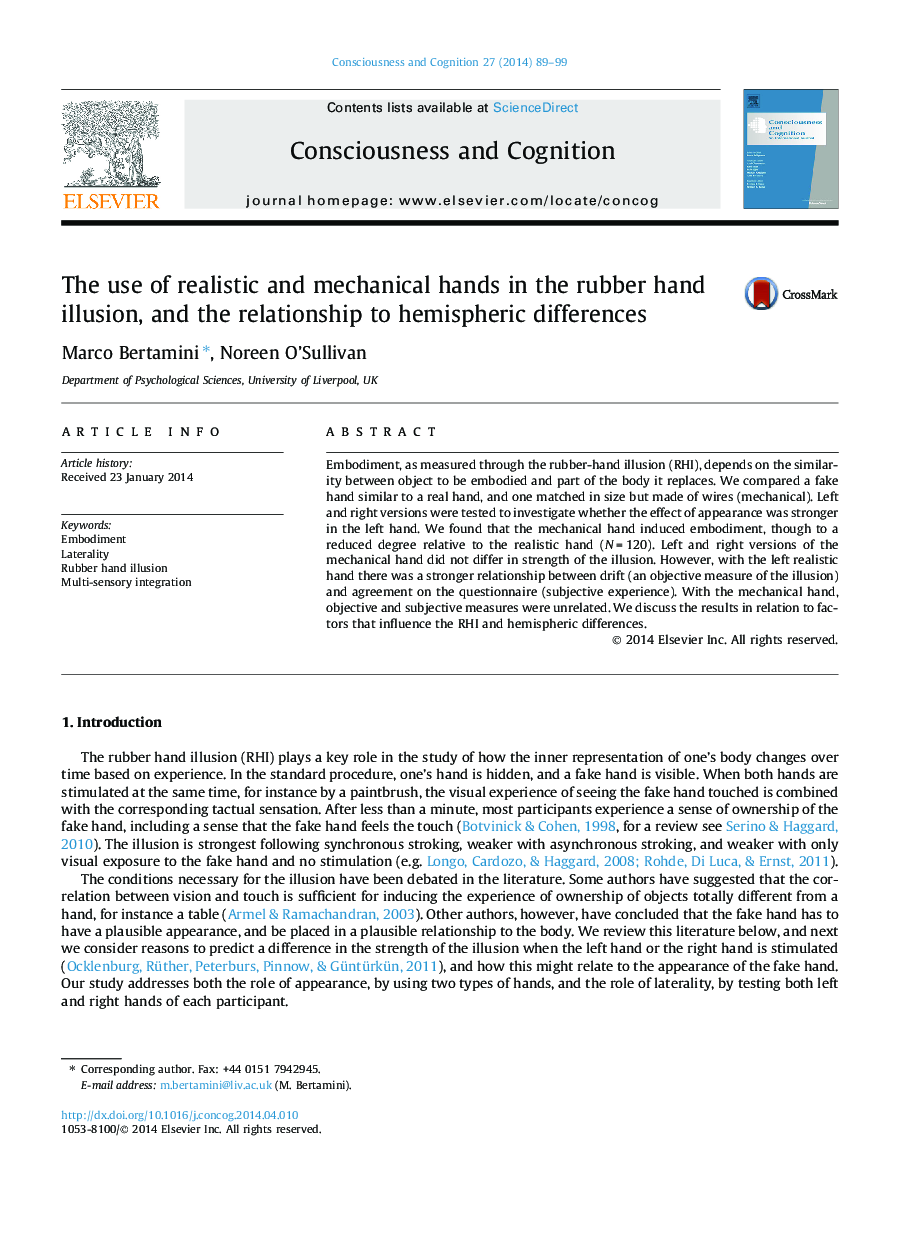| Article ID | Journal | Published Year | Pages | File Type |
|---|---|---|---|---|
| 7289952 | Consciousness and Cognition | 2014 | 11 Pages |
Abstract
Embodiment, as measured through the rubber-hand illusion (RHI), depends on the similarity between object to be embodied and part of the body it replaces. We compared a fake hand similar to a real hand, and one matched in size but made of wires (mechanical). Left and right versions were tested to investigate whether the effect of appearance was stronger in the left hand. We found that the mechanical hand induced embodiment, though to a reduced degree relative to the realistic hand (NÂ =Â 120). Left and right versions of the mechanical hand did not differ in strength of the illusion. However, with the left realistic hand there was a stronger relationship between drift (an objective measure of the illusion) and agreement on the questionnaire (subjective experience). With the mechanical hand, objective and subjective measures were unrelated. We discuss the results in relation to factors that influence the RHI and hemispheric differences.
Related Topics
Life Sciences
Neuroscience
Cognitive Neuroscience
Authors
Marco Bertamini, Noreen O'Sullivan,
